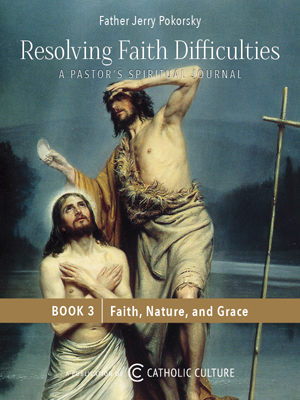Catholic Activity: St. Nicholas
Father Weiser explains some of the tradtions and legends of St. Nicholas. Here is a form that can be presented to children.
DIRECTIONS
Despite the immense popularity of Saint Nicholas during the Middle Ages, both in Europe and Christian Asia, there is scarcely any definite historical fact known about him except that he was bishop of Myra in Asia Minor; that he was cast into exile and prison during the persecution of Emperor Diocletian and released by Constantine the Great; that he died in Myra about 350, and in the year 1087 his body was brought by Italian merchants from Myra to the city of Bari in Italy, where his relics are still preserved and venerated in the church of San Nicola. The reports of numerous miracles ascribed to the saint, both before and after his death, are based on a long tradition. As early as 450, churches were being built in his honor, and his veneration was general in the Greek Church. From there, at the end of the tenth century, it spread to the German Empire, and reached its height when his relics arrived in Italy during the eleventh century. The Church celebrates his feast day as a bishop and confessor annually on December 6.
By the year 1200, this much-loved saint had captured the hearts and imaginations of all European nations. Many churches, towns, provinces, and countries venerated him as their patron saint. He is patron of Greece, Russia, Sicily, and Lorraine; of many cities in Germany, Austria, Switzerland, Holland, and Italy. Merchants, bakers, and mariners, among others, have made him their patron. But he was always best known as the patron saint of children.
The beautiful legend of Saint Nicholas might be told to children something like this:
Saint Nicholas was born of a rich and noble family in the city of Parara in Asia Minor. When he was very little he lost his mother and father and had to live the sad and lonely life of an orphan. After he had grown to young manhood, he decided to devote his life entirely to the service of God, doing good works for his fellow men. Obeying the words of Christ, he distributed all his possessions to the poor, the sick, and the suffering. He is said to have secretly helped very poor people by putting gifts of money through their windows during the night, when no one could see him (just as he now brings his gifts to you during the night).His love for the Christ Child inspired him to make a pilgrimage to the Holy Land and offer prayers in those historical and holy places. On this trip a terrible storm arose but, by his prayers, he miraculously saved the already sinking ship as it tossed and turned in the high seas. That is the reason he is now venerated as a patron of mariners by many brave sailors all over the world.
When he returned home from this pilgrimage, the bishops of Asia Minor elected him as successor to the bishop of Myra, who had just died. The whole city rejoiced when they heard of his appointment. Nicholas received the holy orders, modestly and devoutly, and, as bishop, practiced not only great holiness of life, by fasting and prayer, but had boundless love for his fellow men. Having been an orphan himself, he now became the beloved father of widows and orphans. His constant kindness and charity were bestowed especially on the children, whom he often gathered about him, instructing them in the word of God and delighting them with many little gifts.
Under the Roman Emperor Diocletian, who persecuted the Christians, Saint Nicholas was taken from his home, exiled and imprisoned. He suffered hardships of hunger, thirst, cold, loneliness, and chains. He wanted to die as a martyr. But when Emperor Diocletian left his throne and the first Christian Emperor, Constantine the Great, ruled the Roman lands, all Christians who had suffered in prison because of their faith, were released. Among them was Saint Nicholas, who was able to return to Myra, where he lived for many years, a kind father to all his flock, especially to the poor.
One day he became very ill and soon he realized it was time for him to go to Heaven. There he was met by many angels who conducted his soul to the throne of God. Saint Nicholas was very happy.
The whole city mourned his passing, most of all the little children. But very soon they found out that even from Heaven he continued to help them, if only they asked him. So the children started praying to Saint Nicholas and their prayers were answered by thousands of miracles, small ones and great ones. To this day, boys and girls all over the world pray to their patron saint, Saint Nicholas.
In many parts of Europe children still receive his "visit" on the eve of his feast. Impersonated by a man wearing a long white beard, dressed in the vestments of a bishop, with miter and crozier, he appears in the homes as a heavenly messenger. Coming at the start of Advent, he admonishes the children to prepare their hearts for a blessed and holy Christmas. He examines them on their prayers. After exhorting them to be good, he distributes fruit and candy and departs with a kindly farewell, leaving the little ones filled with holy awe.
It was this "visit of Saint Nicholas" on December 5 that the Dutch brought to the New World as an annual cherished custom. From it later developed the American custom of Santa Claus's visit at Christmas.
LITURGICAL PRAYER — O God, who didst adorn the holy bishop Nicholas with numberless miracles, grant, we beseech thee, that through his merits and prayers we may be saved from the flames of hell.
Activity Source: Handbook of Christian Feasts and Customs by Francis X. Weiser, S.J., Harcourt, Brace and Company, New York, 1958






